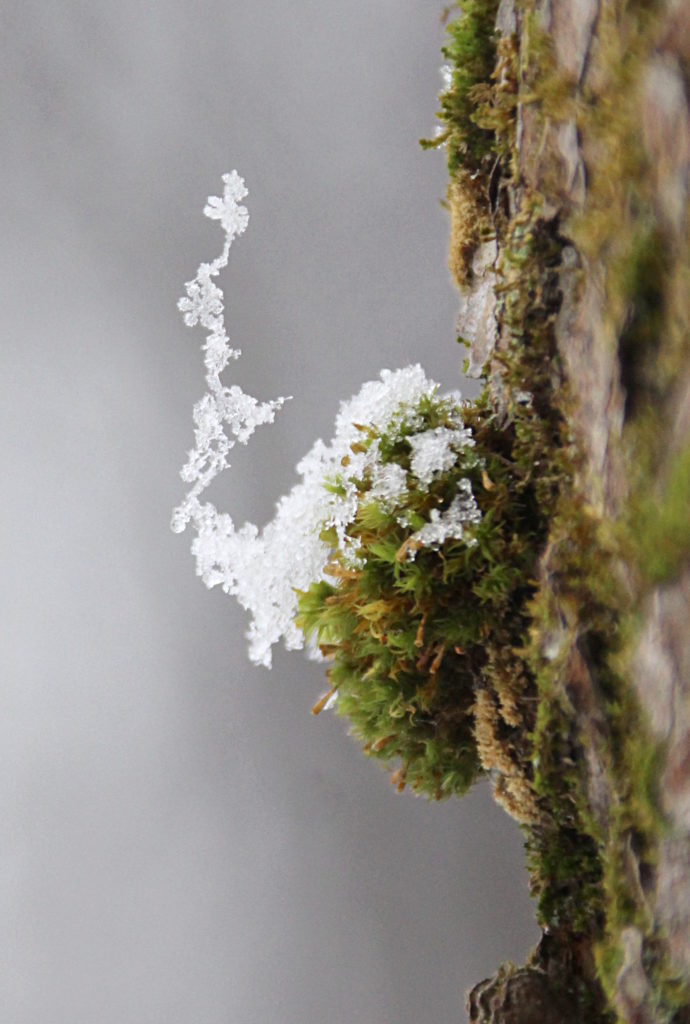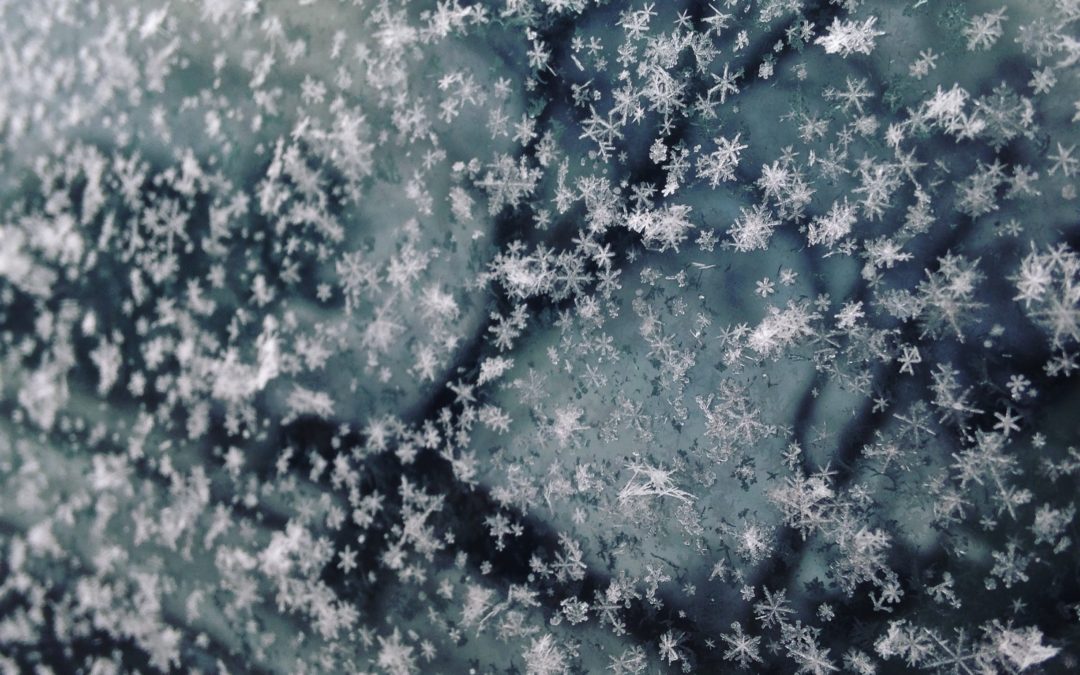When I was working as an environmental educator in Syracuse, one of my all-time favorite programs to teach was all about a man named Wilson “Snowflake” Bentley. During our program we would teach first graders how as a boy little Willie Bentley loved snowflakes more than anything else in the entire world. His love and curiosity inspired him to spend most of his life observing and admiring the tiny ice crystals under a microscope.
“Under the microscope, I found that snowflakes were miracles of beauty; and it seemed a shame that this beauty should not be seen and appreciated by others,” he wrote. The problem of course was that snowflakes, which are really just tiny ice crystals, melt when they get warm. “Every crystal was a masterpiece of design…” he explained. “When a snowflake melted, that design was forever lost. Just that much beauty was gone, without leaving any record.” After four years of experimenting with photomicrography, the photography of tiny objects, Bentley become the first person to successfully capture the beauty of a single snowflake on film. To this day he is known as one of the pioneers of photomicrography.
Over the next forty-six years Bentley took over five thousand pictures of individual snowflakes, most of which you can find in the Smithsonian Institution Archives or in Snow Crystals, a book featuring 2,300 of Bentley’s photographs. While these photographs have been and continue to be admired for their beauty and intricacy, these photos were important for another reason. They taught us all about the structure of snowflakes.
Based on his observations, Bentley noticed that almost all snowflakes have six sides. While some snowflakes are simple hexagons, others grow six branching arms. These arms, while similar and mostly symmetrical, can vary. These variations led Bentley to form another famous idea—the idea that no two snowflakes are the same.

I don’t know about you, but the idea that every single snowflake is completely different is mind-blowing, especially when you stop to think just how many snowflakes fall in one day. According to Hans Verlinde, a cloud physicist from Barrow, Alaska, if all of Chautauqua County was covered by at five inches of snow, that snow would be made up of approximately 5.2 quintillion snowflakes. That’s a five followed by 18 zeros. That’s a lot of snowflakes. And that’s just Chautauqua County. Is it even possible that every single one of those 5.2 quintillion snowflakes can be different?
All snowflakes, no matter where they fall or what they look like when they hit the ground, start out the exact same way, a tiny speck of dust floating around the atmosphere. After a while, once that speck of dust is cold enough, water vapor trapped in the clouds starts to stick to it, forming a water droplet that freezes into a ball of ice and eventually turns into a hexagon-shaped ice crystal. That’s where the similarities end.
From that moment on the shape of the snowflake depends on the temperature and the humidity of the atmosphere. If the clouds are cold and dry the ice crystals will from six-sided plates. That changes, however, if the clouds are filled with moisture. Cold air and high humidity are the perfect ingredients for to create dendrites, star-shaped snowflakes with long, branched arms. The final shapes depend entirely on these random conditions, which might change as the snowflake falls through the layers of the atmosphere.
So yes, no two snowflakes are exactly the same and the reason why is because no two snowflakes fall the exact same way or run into the same conditions. “Snowflakes are symmetrical, but they’re not perfect,” Joe Hanson, the creator, writer, and host of PBS’ It’s Okay to Be Smart, explains. “They’re ordered, but they’re created in disorder. Every random branch retells their history, that singular journey that they took to get here. And most of all, they’re fleeting and temporary.” To experience snowflakes firsthand, come to the Snowflake Local Living Festival at Audubon on February 2 from 10 a.m. until 4 p.m.
While it’s easy to take snowflakes for granted every time we have a snowstorm, every snowflake has a story to tell, and every single one is one of a kind. How could we not think that’s amazing? What’s even more amazing? That most of what we know about snowflakes is all because of the curiosity of a little boy who loved snowflakes more than anything else.
Audubon Community Nature Center builds and nurtures connections between people and nature. ACNC is located just east of Route 62 between Warren and Jamestown. The trails are open from dawn to dusk as is Liberty, the Bald Eagle. The Nature Center is open from 10 a.m. until 4:30 p.m. daily except Sunday when it opens at 1 p.m. More information can be found online at auduboncnc.org or by calling (716) 569-2345.
Margaret Foley is a naturalist at Audubon Community Nature Center.


Recent Comments